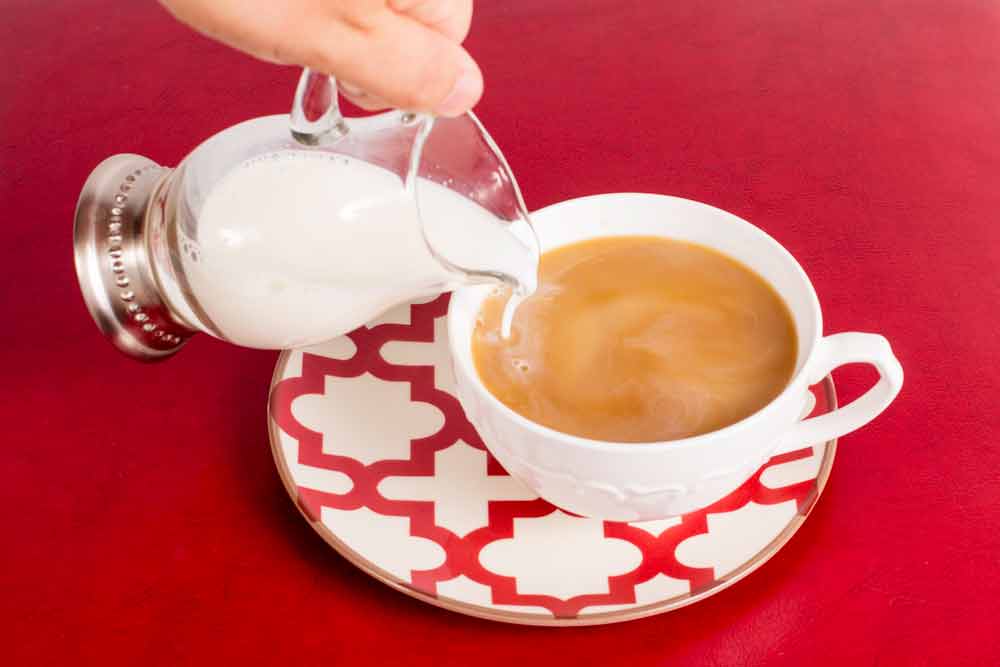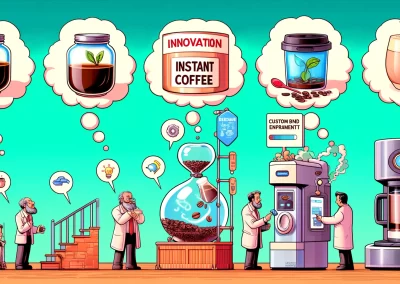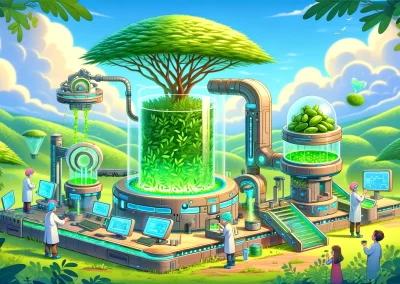If you’ve ever experienced a carton of milk that’s way past its sell-by date, you know that it can turn into lumpy mush over time. While that’s one way to curdle dairy, you can achieve the same effect by adding acidic liquid (like coffee or lemon juice).
All dairy products contain proteins, including casein. When milk is liquid, these proteins are stable and don’t clump together. When you add acid to the mix, the proteins break down and start attaching to each other, creating curds (aka curdling).
This process is necessary for various dairy products like cheese and yogurt, but it can be off-putting when it happens in your cup of coffee.
How Does Coffee Affect Curdling?
Most coffee is acidic, so adding creamer to a hot cup of joe will increase the risk of curdling. The average pH balance of coffee is between 4.85 to 5.10, with lower numbers having higher acidity.
Lighter roasts are more acidic than dark roasts, so if you love a bitter cup of coffee, you’ll have a higher chance of curdling your creamer.
Heat also plays a role, as it can break down the proteins faster. For example, if you pour creamer into a cold brew coffee, it will take longer to curdle because of the lower temperature and reduced acidity.
How To Prevent Creamer Curdling In Your Coffee
The first time my creamer curdled in my coffee, I wound up tossing it out. While I’m not quite as picky now as I was before, the image is still off-putting.
Fortunately, you can follow these tips to ensure that your coffee creamer stays smooth and silky every time.
- Toss Old Creamer. As creamer ages, it builds lactic acid, meaning that it curdles much faster than before. While a couple of days past the expiration date should be okay, try to stick to fresher cream when possible.
- Switch to Darker Roasts. I don’t like acidic coffee, so I avoid lighter roasts already. If you’re using light-roast coffee, why not switch to darker coffee beans and see if that helps.
- Let Your Coffee Cool. Since hot coffee can break down the casein in your creamer faster, let it reach room temperature before mixing them.
- Pour the Creamer First. Another way to avoid overheating your creamer is to pour it first and then gently add the coffee.
- Use Whole Milk or Heavier Creamer. Half and a half or heavy cream doesn’t curdle as quickly, thanks to the fat cells protecting the proteins. Just make sure that you’re not adding too many calories to your morning joe.
Why Is My Creamer Curdling In My Coffee
Overall, if you want to avoid curdled creamer in your coffee, you might have to experiment with a few prevention tactics.
That said, because coffee is such a distinct beverage and so many people have unique preferences, you might have to take a few lumps every so often (pun intended).
Or, you can just visit coffee shops and let the barista make your drink perfectly and curd-free every time.
Is It Safe To Drink Curdled Creamer In Coffee?
Technically speaking, yes, it’s safe. If milk curdles from old age, it’s toxic and can make you sick. However, if curdling occurs from a chemical reaction, it’s safe to drink, albeit far less tasty.
Are Some Creamers Better Than Others To Avoid Curdling?
Yes, high-fat milk or creamer will resist curdling, even if you don’t change the acidity of the coffee or its temperature.
Can Non-Dairy Creamers Curdle?
Yes, milk alternatives like almond milk, coconut milk, and soy milk can all curdle since they contain proteins. However, rather than breaking down casein (which is only in animal milk), the coffee acts as a coagulant. Typically, soy milk curdles the easiest.









